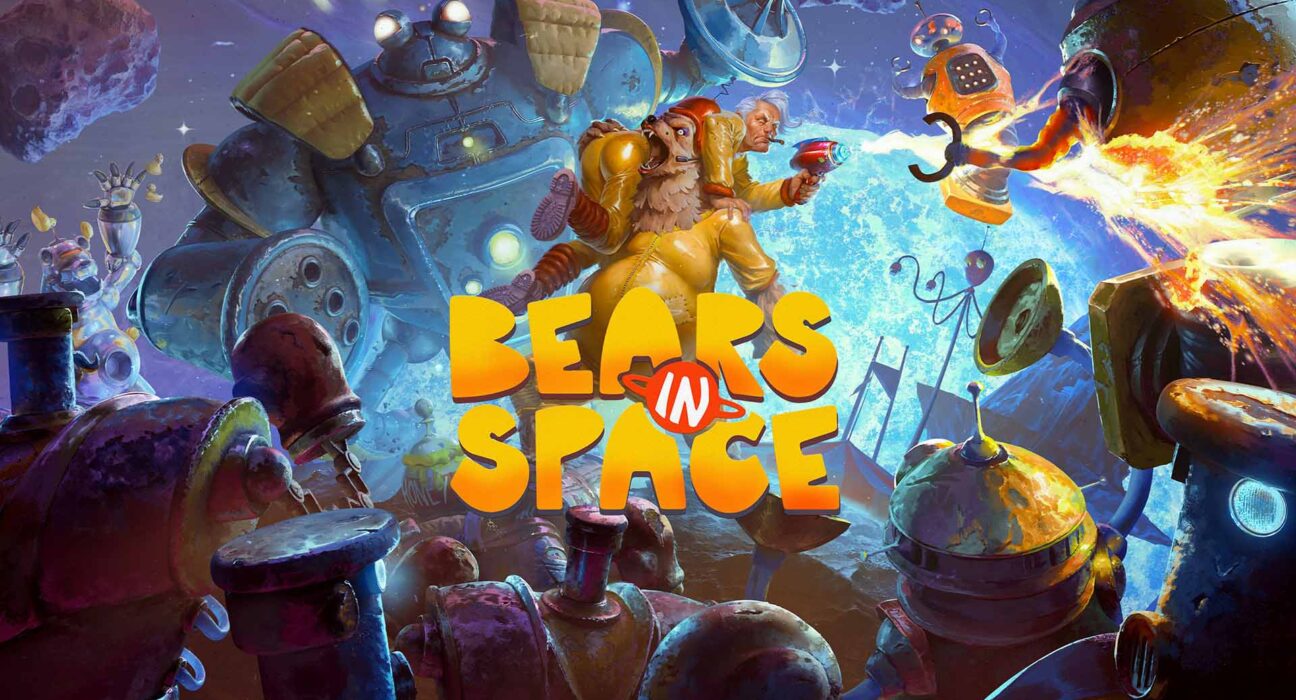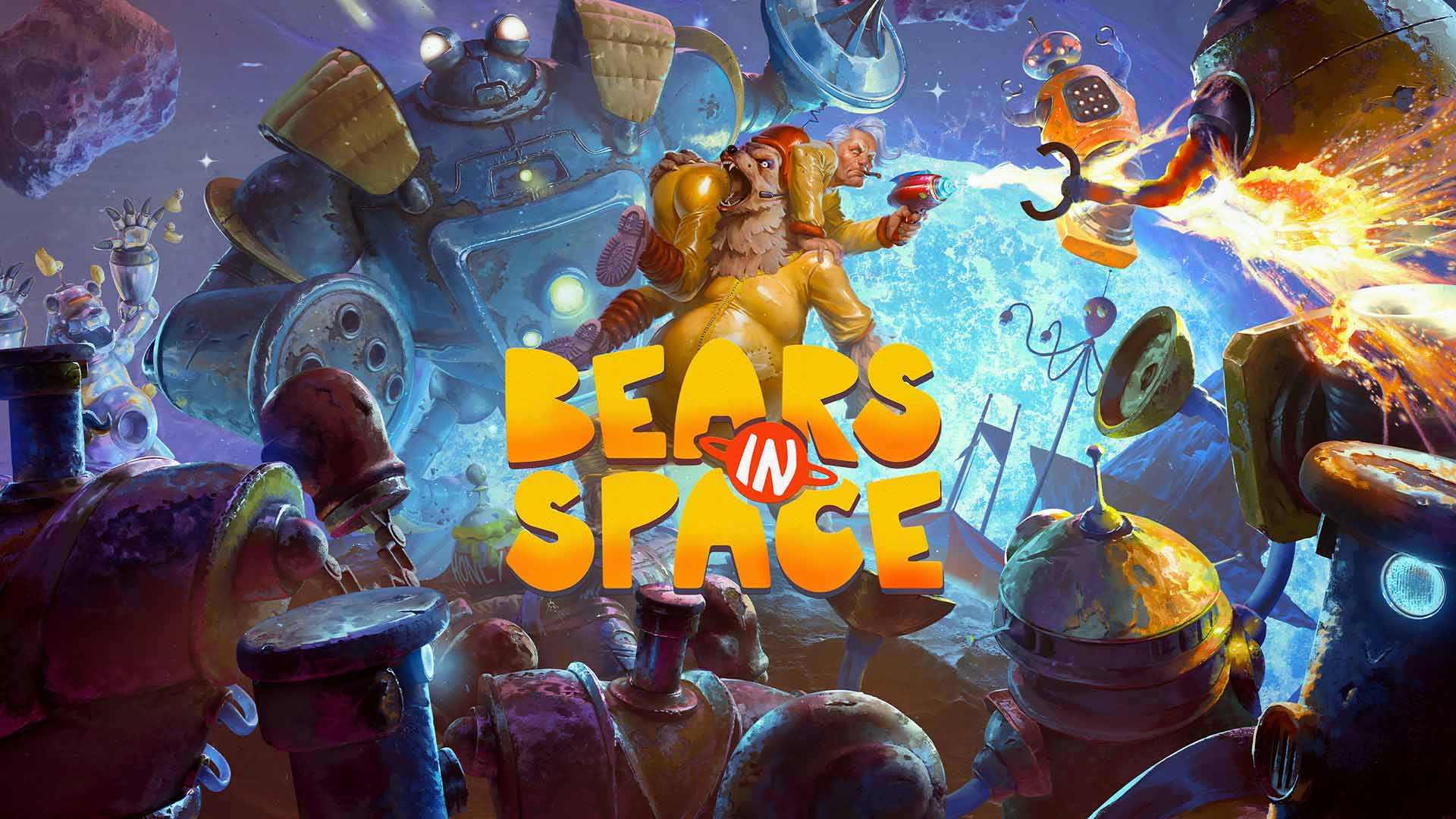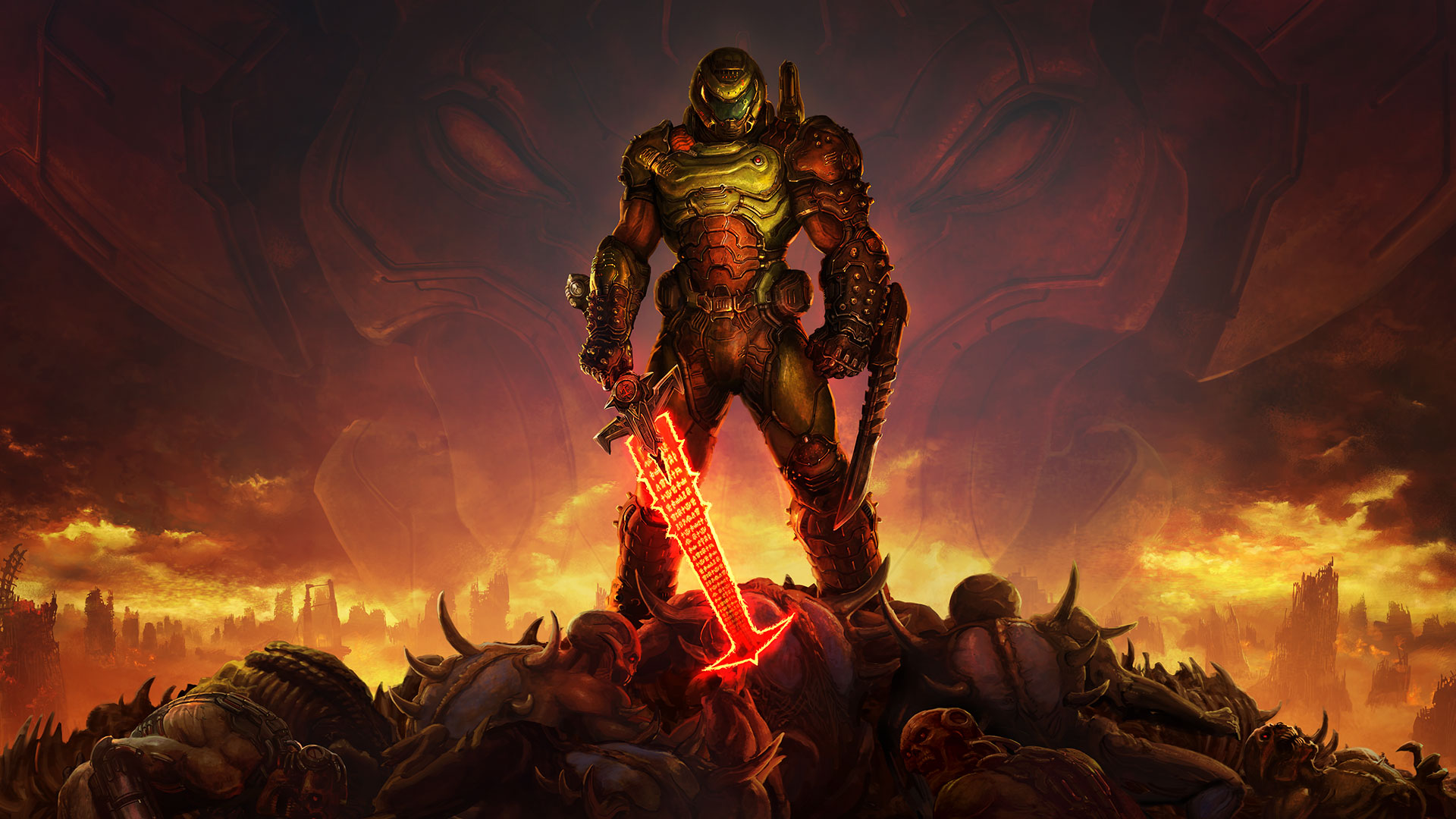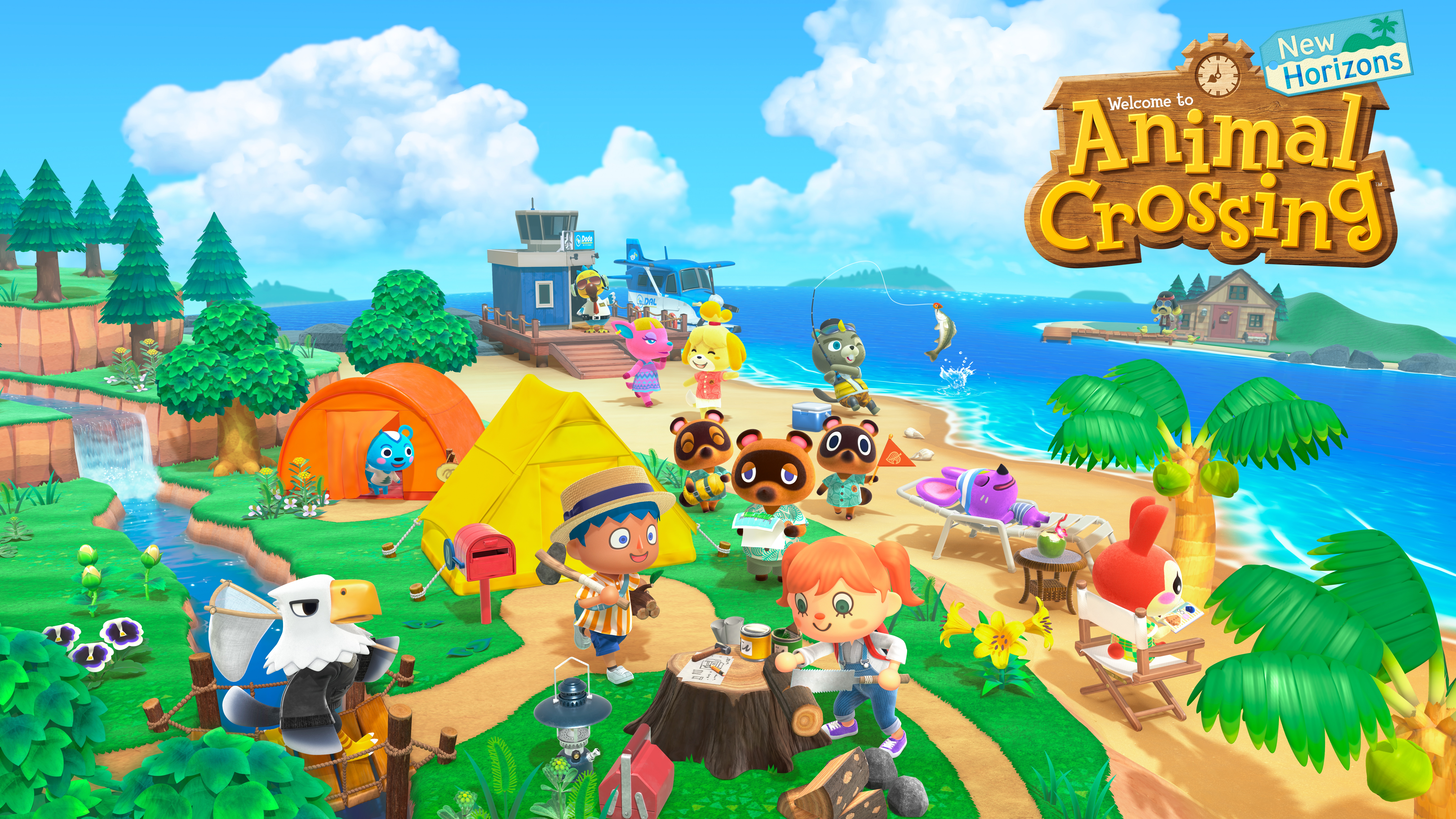Based out of the small Australian city of Ipswich sits a developer by the name of Broadside Games. Comprised of three friends-turned-developers, this small indie studio has been toiling away at making a game that is purely that, a game. No bells and whistles, no pushing the boundaries of the medium or the limits of the available technology, just a game that is fun to play. This is where Bears In Space’s whole design ethos stems from. It’s a video game through and through, for better and for worse.
Bears In Space sees you assume the role of Max Atoms, a spacefaring human aboard a notably non-hostile spaceship that has come under attack from bears…in space. The attacking bears have struck issue with the once hostile bears held captive aboard the ship, including an erratic and chaotic bear by the name of Beartana. Push comes to shove, Max makes some stupid bad incredible decisions that result in the destruction of the ship, and so Beartana and Max Atoms work together to get to the train station and get back to Earth.

In case it wasn’t already obvious with the name Beartana, Bears In Space in an overtly referential game. If you are someone who appreciates a wide variety of art and entertainment mediums, then this game will entertain you just on this alone. It pokes fun at various tropes, jokes, and elements of pop culture in a way that never appears mean-spirited but feels like it comes from a place of adoration. For example, there is a section of the game that completely riffs on Pokémon and how its NPCs have a tendency to talk about the same thing to inform the player about what item to use or which direction to go. Bears In Space riffs on this with the same subtlety that the source material employs, and it works incredibly well.
In a weird way, because there are so many references to other media, it almost feels like a hall of fame. There are many callbacks to some very popular and notable series, but there are some very obscure references at the same time. It’s hard to list them all, but it is very easy to find this experience enjoyable based solely on the references, but that isn’t all this game offers.
If you like lighthearted games, then this will be the one for you. The people at Broadside Games have a penchant for jokes with quick delivery and little to no time to dwell on the joke. There are, of course, some of the more long-winded jokes, but you aren’t left to sit on it. Once the punchline comes through, it is time to move on to the next joke. It’s kind of comparable to the Borderlands series in a way but with fewer grating characters and less of the dated and declining humour – so nothing like Borderlands. The story is still nothing to write home about, but it’s also not the point. Broadside wasn’t aiming for anything incredibly deep or compelling, and instead, they were clearly focusing on a platform for jokes and lighthearted fun with which they mostly succeed. There are some jokes and gags that don’t quite land as well as one might hope, but those are few and far between.
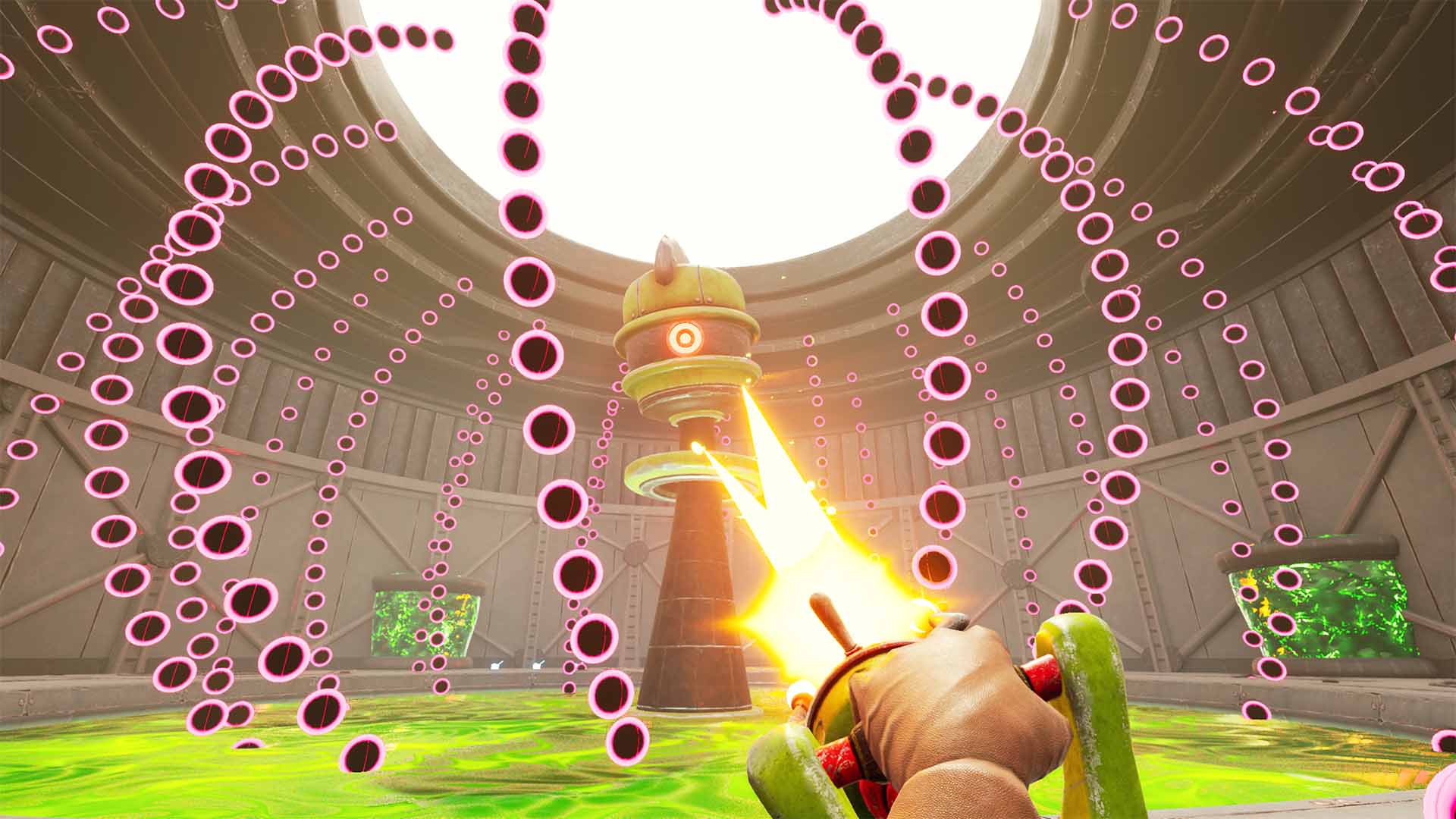
In terms of gameplay, Bears In Space feels like a mishmash of DOOM and Returnal. DOOM Returnal, if you will. It has all the slick, responsive and fun movement conventions of old-school shooters like Doom, Unreal Tournament, and Quake, while mixing in the chaotic nature of bullethell gameplay. You see an enemy and then suddenly they throw tens or hundreds of coloured balls at you. Adding further to the equation is platforming, which does a great job of keeping the player engaged with some of the more nuanced movement that the game features.
I’d say that a majority of the platforming in Bears In Space exists to act as slower-paced palette-cleansing moments. It’s not insanely designed, nor does it need to be. It has a clear role to serve between the chaotic nature of the game’s combat encounters and it does an excellent job at this. What makes this even better is the inclusion of flexible difficulty adjustments to the game. These adjustments can be made to both the combat and the platforming, but what is really cool about switching the platforming to an easier mode is the fact that it removes some of the more difficult facets of the platforming’s design. The most notable example of this is how it removes some platforms’ ability to flip over, which reduces the tension and timing to facilitate a calmer experience for the player. This inclusion alone widens the approachability of the game and acts as an example of how, when designed from the ground up, accessibility and difficulty don’t need to be systems that just arbitrarily scale things up or down, they can instead be elements of core functionality that enhance the experience for the player no matter what options are selected.
Your runtime with this game may vary, as there are so many different side objectives and secrets to be found, but at no point does the game really force you into them. If you decide to just book it through the main scenarios, then you might find the experience relatively short, and if you try to get everything done, you might find it incredibly chunky. My approach was somewhere in the middle, as I would explore the nooks and crannies of these levels until I felt satisfied with them and moved on, and I would argue that this is the approach many people will take. Some people are completionists but most people aren’t, and through this approach, I found that the later stages of the game ended up feeling a bit too long-winded for me. Not that the stages themselves are inherently bad, but it can feel like the game moves the goalposts towards the end just to insert a few more jokes. The jokes are funny, don’t get me wrong, but it risks rubbing the player the wrong way.
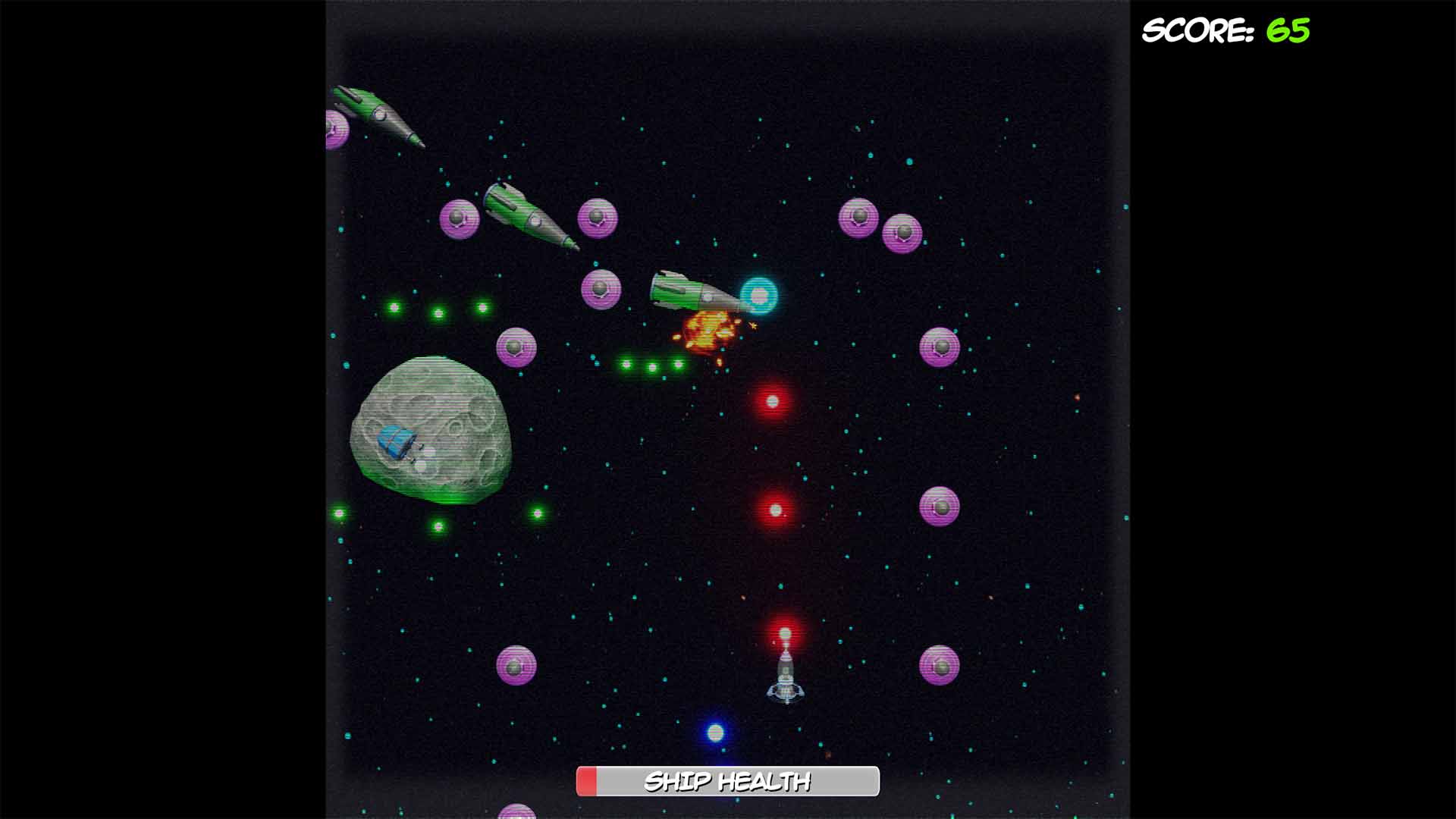
On a technical note, the game runs incredibly well. I don’t think I encountered many bugs beyond the dialogue, which sometimes cut itself short or interrupted itself to play the next line in scripted moments, which felt weird. Because the game is so well optimised and fully supports gamepads like the DualSense, I can see the game being brought to consoles, though there is no expectation as porting is an expensive affair. The only technical blemish I encountered while playing was likely spurred by playing on an ultrawide monitor. The game supports ultrawide, but it seemed like the game struggled to scale to this aspect ratio correctly when being relaunched. This would usually result in a stretched display and the way to fix this involved changing the display method from fullscreen to windowed. Sometimes this would work just fine, other times it would make it so that every time you alt+tab out of the game, it squishes the game down really weirdly and I’m not exactly sure why. Either way, it’s a small footnote on what is otherwise an impressively optimised game from such a small team.
- Conclusion
- Bears In Space, if nothing else, is just a very good and very fun video game. It knows exactly what it sets out to achieve and does it in style. Not everything it wants to do lands with the grace and poise that one would hope, and the game risks burning the player a bit with some jokes that shift the goalposts near the end, but that doesn’t stop it from being a genuinely fun experience. Full of cool features, moments, and references to other media, this game does an excellent job of facilitating a quirky experience that can be enjoyed by all.
- PC
- ASUS TUF Gaming X670-E Plus
- Ryzen 9 7950X
- MSI RTX 3080 Ti GAMING X TRIO 12GB (Driver ver. 552.44)
- G.Skill Trident Z5 RGB 64GB (2x32GB) DDR5-6000 CL32
- Samsung 970 EVO Plus NVMe SSD 500GB (OS), Kingston NV2 M.2 NVMe Gen4 SSD 4TB (Game install)
- Windows 10 Home (Build ver. 19045)



